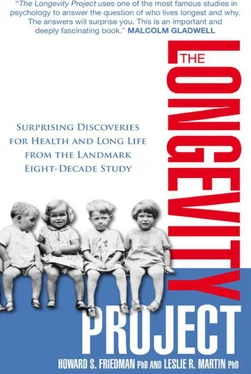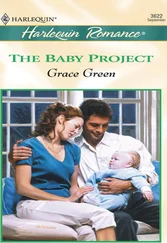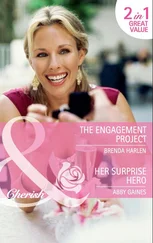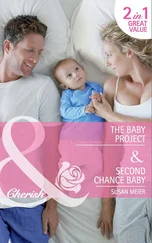We decided to explore how the Terman subjects viewed and explained the world when they were young adults, and specifically how their degree of catastrophizing might influence the length of their lives and the cause of their deaths.
Chicken Little Meets Content Analysis
Catastrophizing is expressed not so much in how people feel about events or how they respond, but in how they think about things that happen or may happen to them. The bad part is that catastrophizers—the Chicken Littles of the world who think the sky is falling—can bring trouble onto themselves. The good news is that catastrophizing involves your thoughts, and thoughts can be changed and improved.
For this part of the longevity project, we collaborated with Professors Chris Peterson and Martin Seligman, experts in explanatory style —how individuals explain the causes of bad happenings. For example, some people tend to blame themselves when something goes wrong, rather than putting the onus on someone else or on bad luck. Some individuals also see difficulties as more permanent or long lasting than is justified. They think, “This problem is going to last forever!”
Most important, some individuals overgeneralize the problem: instead of seeing it as limited and specific, they believe it is going to undermine everything they do. Their life is “a total mess.” These are the true catastrophizers—their pessimistic view of life sees every stumble as a calamity. Karen was like this. She was timid and had little self-confidence, even in childhood, and was described in grade school as extraordinarily sensitive to the disapproval of others. Her teacher noted that, when disciplined, she took it hard and seemed to have difficulty getting over the experience. At about that same time her mother reported that Karen had persistent fears of being kidnapped. In short, Karen’s perception of her life seemed to be that one bad thing would follow another.
When they were in their late twenties, the subjects wrote answers to Dr. Terman’s questions about their own flaws and about the bad events they had faced. In particular, they were asked about their most serious faults of personality or character to date. They were also asked to describe disappointments, failures, bereavements, and unfriendly relationships with others that had a prolonged influence on them. Some noted minor flaws of character, such as being too ambitious or too painstaking. Others, such as Karen, had gone through the divorce of their parents and lost all faith in the possibility of happy marriage. Some were harsh in their self-criticism: Karen vividly described her shyness and its effect on her life, something she saw as an insurmountable character flaw.
Our research collaborators, using a technique called content analysis, analyzed and coded the explanations that the Terman participants had written. That is, trained reviewers evaluated to what extent each person was a catastrophizer in early adulthood, based on criteria such as the vocabulary they used. They reviewed over 3,000 such explanations from almost 1,200 participants, then shipped the evaluations to us, and we conducted the complicated statistical analyses needed to determine if there was a connection between a catastrophic outlook and longevity.
Catastrophizing and Mortality
The results were clear. The catastrophizers died sooner. The difference was especially large for the men. 25 25 To read more about our initial study of catastrophizing, see C. Peterson, M. E. P. Seligman, K. H. Yurko, L. R. Martin, and H. S. Friedman, “Catastrophizing and Untimely Death,” Psychological Science 9 (1998): 127-30.
This held true even if we excluded anyone who died in the five years immediately following the assessment, ruling out the possibility that a participant was already seriously ill and influenced by his or her predicament.
Catastrophizers generally have superficial relationships with other people and cannot face their problems. 26 26 For more information on the risks associated with catastrophizing, see C. Peterson, S. F. Maier, and M. E. P. Seligman, Learned Helplessness: A Theory for the Age of Personal Control (New York: Oxford University Press, 1993).
Fidgety Philip was one of the worst Terman study catastrophizers. He viewed his misfortunes as pervasive in their effects—seeing his character flaws as qualities that permeated every aspect of his life. (He described his impulsiveness and inability to control his alcohol use as being his two biggest faults.) Like Karen, Philip interpreted each of his misfortunes as bigger than life. He died of a heart attack before his sixty-fifth birthday.
Catastrophizing-Related Ailments: How They Died
Why did so many of the catastrophizers die young? We found a relevant source of information in the death certificates. We grouped the causes of death into four categories: cardiovascular disease (heart attacks or strokes), cancer, accidents or violence (homicide, suicide, car crashes, and so on), and “other” causes, such as infection.
Catastrophizers were clearly more likely to die from accidents or violence. But they were only slightly more likely (than noncatastrophizers) to die from the various other causes of death. So we had a good clue as to why catastrophizing was especially deadly—it’s dangerous. People who believe that having one significant problem is a sign that lots and lots of bad things will follow put themselves onto risky paths, especially in terms of the likelihood of a violent early death. They blamed themselves for far too much and they suffered the consequences. This was poignantly true in Karen’s case. She took her own life while still in her thirties.
Yet not all catastrophizers, nor even most catastrophizers, faced the fate of an early demise. Many improved their viewpoint over time and then changed the direction of their lives. Nevertheless, how people explained the world around them turned out to be one predictive piece in the longevity puzzle.
SELF-ASSESSMENT: CATASTROPHIZING
Below, circle the response that best reflects how true each statement is of you.
1. I worry that life will get worse and worse.
5 – very accurate
4 – moderately accurate
3 – neither accurate nor inaccurate
2 – moderately inaccurate
1 – very inaccurate
2. When I look at the state of the world, I see opportunities everywhere.
5 – very accurate
4 – moderately accurate
3 – neither accurate nor inaccurate
2 – moderately inaccurate
1 – very inaccurate
3. I have a magic touch—when I get involved in an issue everything seems to work out fine.
5 – very accurate
4 – moderately accurate
3 – neither accurate nor inaccurate
2 – moderately inaccurate
1 – very inaccurate
4. I routinely blow my chances and mess up my opportunities.
5 – very accurate
4 – moderately accurate
3 – neither accurate nor inaccurate
2 – moderately inaccurate
1 – very inaccurate
5. I fear that the worst is going to happen.
5 – very accurate
4 – moderately accurate
3 – neither accurate nor inaccurate
2 – moderately inaccurate
1 – very inaccurate
6. When I mess up on little things, other things start falling apart.
5 – very accurate
4 – moderately accurate
3 – neither accurate nor inaccurate
2 – moderately inaccurate
1 – very inaccurate
Scoring: For statements 2 and 3, which are phrased in the opposite direction, reverse your scores (that is, if you gave yourself a 5 change it to a 1, change a 4 to a 2, leave 3 as it is, change a 2 to a 4, and replace a 1 with a 5. Now add up your score—it should fall between 6 and 30. An average score on this catastrophizing scale is about 12 or 13; those who are particularly mellow about mishaps will score below 10, whereas definite catastrophizers will score at 24 or higher.
Читать дальше











